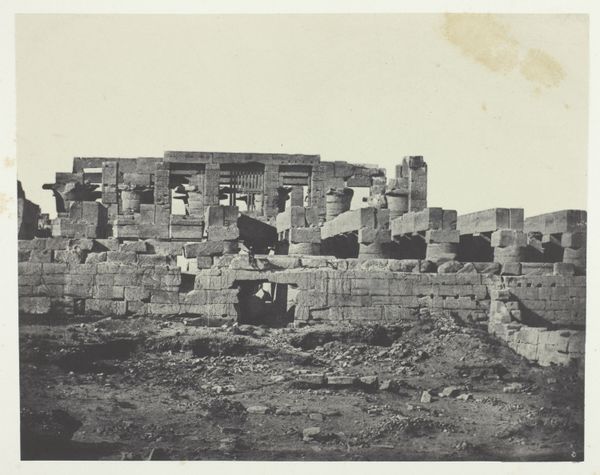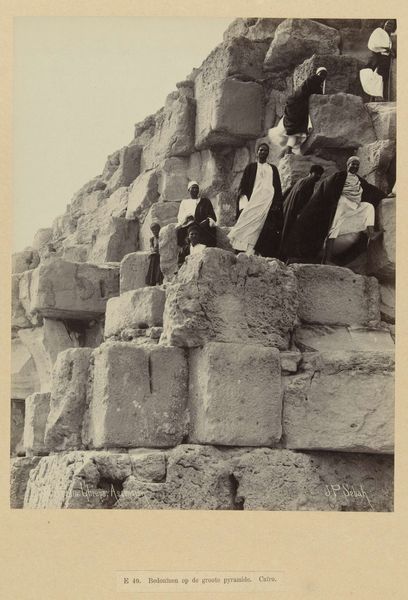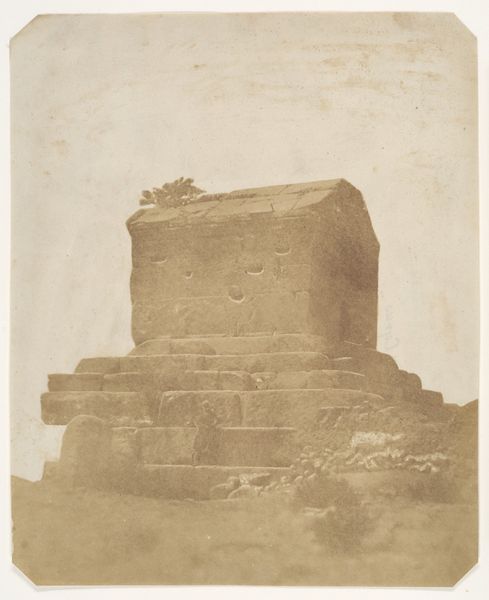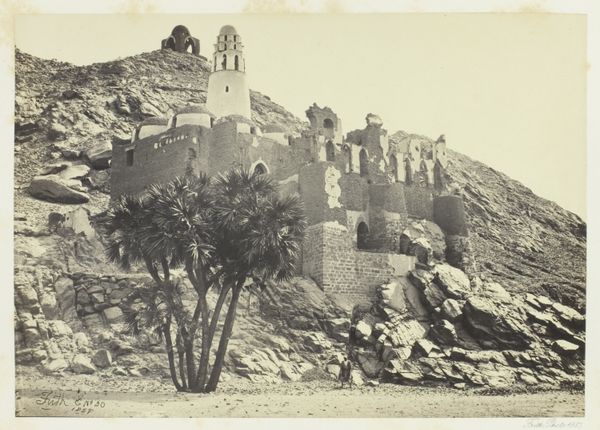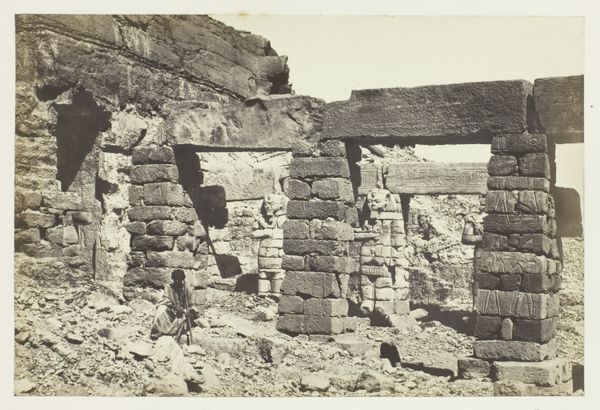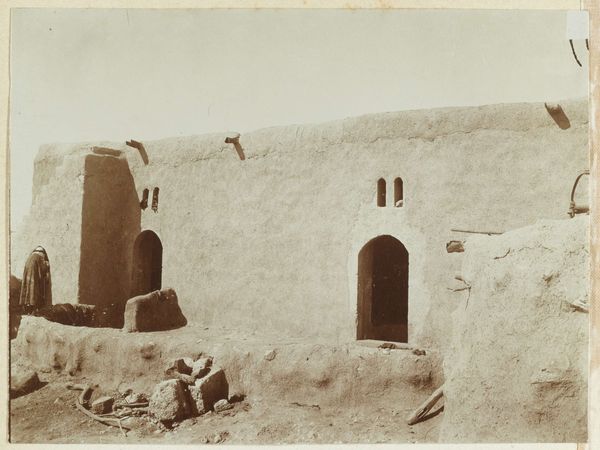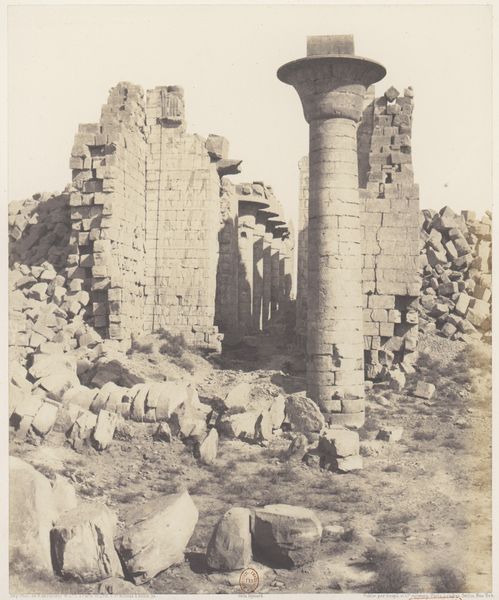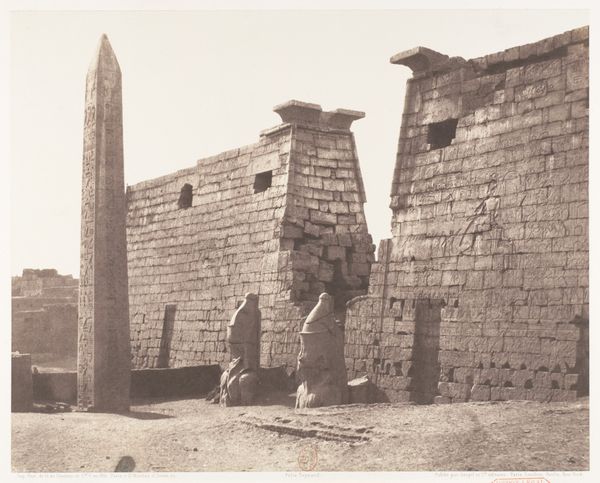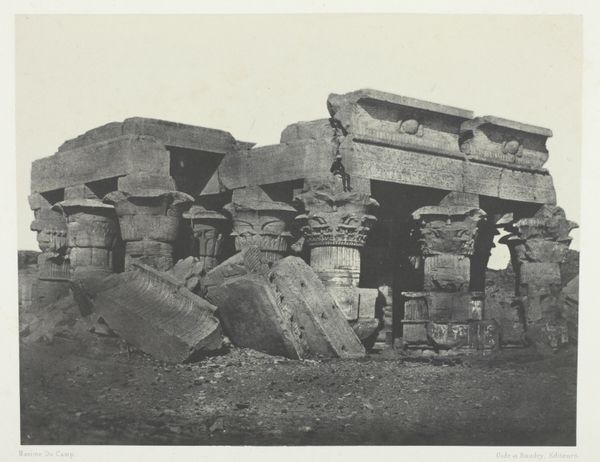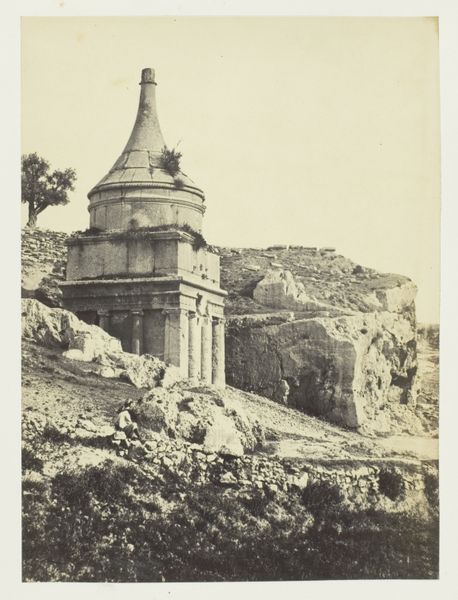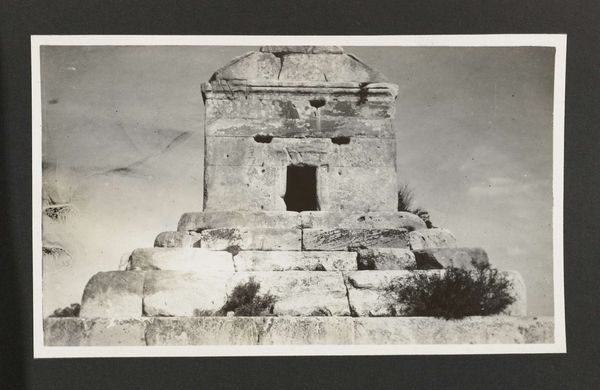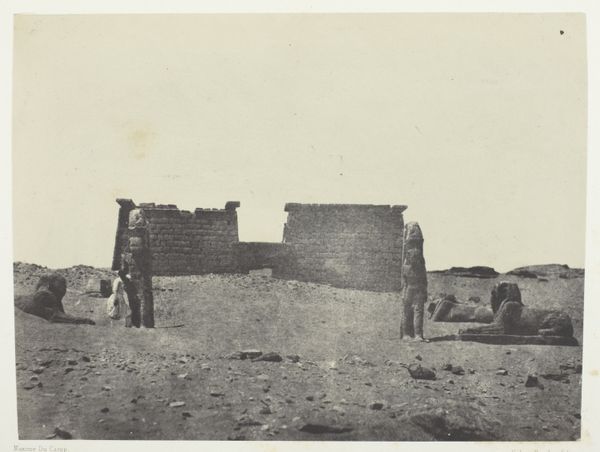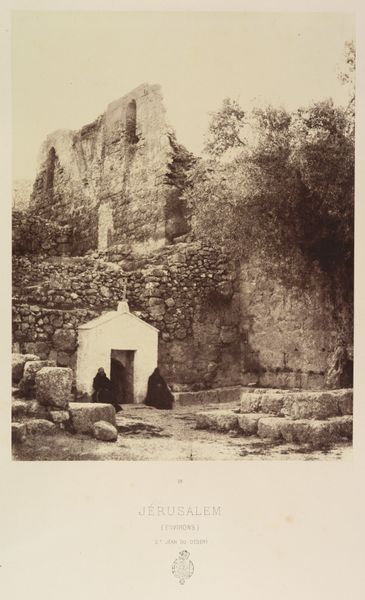
Gezelschap poserend op de graftombe van Cyrus II de Grote in Pasargadae c. 1880 - 1895
0:00
0:00
photography
#
portrait
#
photography
#
ancient-mediterranean
#
orientalism
Dimensions: height 230 mm, width 178 mm
Copyright: Rijks Museum: Open Domain
Curator: So, we have here "Company Posing on the Tomb of Cyrus II the Great in Pasargadae" circa 1880-1895, a photograph by Antoine Sevruguin. Editor: It’s a striking image! The sheer scale of the tomb, the group of people posed on it… It gives you a real sense of both history and… almost, I don’t know, tourism? What do you see in this photograph, especially regarding its materials and the way it was made? Curator: This image compels me to consider the relationship between labor, material representation, and colonial power. The photograph itself, as a mass-reproducible medium, democratizes the image of the tomb. It makes the "Orient," and by extension Cyrus' legacy, a consumable commodity for a Western audience. How do you see the photographer’s labor intersecting with the representation of the tomb as a product? Editor: Well, Sevruguin was operating in a complex colonial context, so photographing the tomb in this way could be seen as… exploitative, perhaps? But also as providing some level of preservation by documenting its state. Curator: Precisely! Consider also the materiality of the tomb itself, built by labourers, its stones sourced and placed under specific socio-economic constraints within the Achaemenid empire. Then juxtapose it with photography's industrial processes, the chemical treatments, and the darkroom labour back in Sevruguin's studio. Does that intersection complicate how you perceive "authenticity" here? Editor: It does. It's no longer a simple matter of viewing the tomb as an isolated, ancient artifact, but about considering layers of production and consumption through these intertwined histories of materials and the making of them into a single picture. Curator: Right. The photo becomes a document of not just the site, but also of colonial perspectives, labor, and access mediated through the technology of photography and the cultural trends, like orientalism, influencing its distribution. It forces us to rethink what "value" this image held, and for whom. Editor: This is a really useful approach. Thanks, I hadn’t thought of it like that! Curator: My pleasure. There is much more we could unpack.
Comments
No comments
Be the first to comment and join the conversation on the ultimate creative platform.
